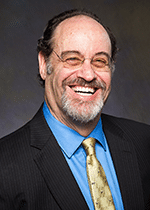
Why is this topic important for today’s healthcare providers?
Today’s healthcare provider must be educated on the scientific literature and how to investigate and report on what appears to be effective clinical practices in order to share that knowledge with other clinicians. Today’s healthcare providers also need to ensure that their patients get access to care that evidence supports as effective.
There are national guidelines through the American Osteopathic Association that recommend using osteopathic manipulative treatment (OMT) for patients with somatic dysfunction related to low back pain symptoms. The question is, should all patients have access to this care that is recommended? Can all providers of health care administer this treatment modality that has shown to be effective in clinical trials? Unfortunately, the procedures used in the clinical trials were taught in osteopathic medical schools, but not necessarily taught in other clinical disciplines such as chiropractic, physical therapy or medical schools. Furthermore, not all osteopathic physicians use the OMT they learned in school.
Even though some of the clinical trials used standardized protocols for applying these procedures to participants, not all osteopathic physicians use those same procedures all the time; instead, they individualize their treatments to each patient.
So how does a patient with low back pain get access to the care that is recommended by the guidelines that are based on these clinical trials? This is a translation problem. The physical therapy and chiropractic professions may face the same challenges when it comes to the evidence.
Some clinical trials (pragmatic clinical trials) allow doctors to provide manipulative care to the patient based on what they find on the physical exam that is amenable to the doctors’ skills and the procedures with which they are familiar. However, if this clinical trial demonstrates effectiveness, how does a patient get access to that care? Do they have to go to the specific doctor who participated in that clinical trial? Or can any doctor applying the principles used in the clinical trials get the same effectiveness with their treatment?
What about your presentation topic may surprise people?
People do not realize how difficult it is to translate research into practice. Much of what we do in clinical practice is not based on clinical trials; instead, much of clinical practice is based on the best scientific evidence combined with the experience of the practitioner and the values of the patient.
Are there new developments in your topic area that make your presentation at ICSC especially relevant or timely?
There have been articles that state that spinal manipulation is not safe in the cervical spine and it is not effective for any clinical condition. There is contrary literature that states that it is safe and effective. There is a guideline published by the American College of Physicians that did not review osteopathic clinical trial literature in its systematic review. The author stated that the reason was that osteopathic manipulation entails a variety of techniques, and so they did not want to include it with the literature from the chiropractic studies, which supposedly used one type of technique (spinal manipulative therapy) that the authors believed entailed one specific maneuver and is a clearly defined intervention. Thus, they did not recommend osteopathic manipulative treatment for patients. So that led to the American Osteopathic Association (AOA) developing its own clinical guidelines.
Then the American Heart Association recommended that providers of cervical spine manipulation should warn patients that if they get this procedure it could result in stroke or death. It recommended that if a patient has complaints of neck pain, they should seek medical treatment from a qualified professional—which basically says that those who do cervical spine manipulation are not able to distinguish if someone has an underlying medical or surgical condition. AOA did not agree with this either. Osteopathic physicians are trained at the level of the MD to diagnose any disorders of the neck region and to utilize not only manual therapy but also medicine, surgeries and other diagnostic procedures. When an osteopathic physician decides to use manipulation on the cervical spine, it is because it has been indicated by the history, physical exam and other diagnostic tests. These procedures are not designed to cause harm, stroke or death. There is a higher risk of people dying from medications given out daily, yet there is no recommendation that says patients should be warned that if they take medicine–including opiate medications—they could die. Yet hundreds of thousands of people are dying from opiate medications.
What practical knowledge or skills can attendees expect to take away from your presentation? Who should attend?
Attendees of my presentation to should leave being able to:
- Determine the appropriateness of using manual treatment for patients with acute and chronic low back pain based on the evidence presented.
- Identify commonalities amongst professional guidelines that are based on the scientific literature for patients with low back pain.
- State the contraindications to manipulation of the lumbar spine in patients with low back pain.
- Recite the recommendations for use of complementary therapies in addition to manual procedures for patients with low back pain.
- Determine the cost effectiveness of osteopathic manipulative treatment.
***
ICSC will bring together researchers and practitioners of the chiropractic, physical therapy and osteopathic professions to initiative a dialogue on the use of manual therapies and non-pharmacological approaches for the management of pain. The event, which takes place Nov. 8-9 in Pittsburgh, Pa., aims to help participants identify opportunities for interprofessional research and collaboration, raise awareness among the professions, and develop interprofessional care pathways. To learn more, including hotel and registration information, click here.
